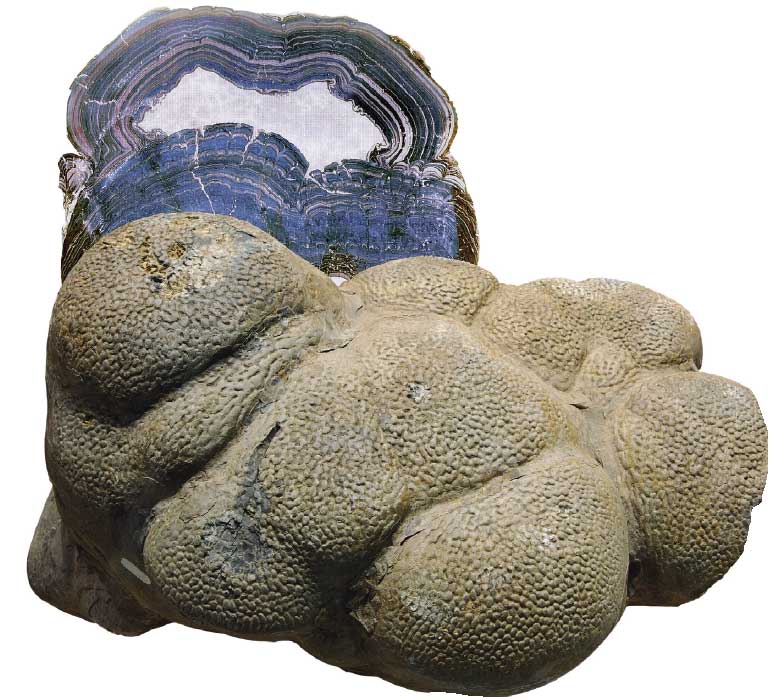Stromatolite
Although the earliest life on the Earth is thought to have appeared about 4 billion years ago, any direct evidence of its existence has not yet been discovered. The oldest fossil traces of life so far discovered are the records made by bacteria about 3.5 billion years ago. Stromatolite, meaning 'stone bed', is an organosedimentary structure of thin laminae produced principally by blue-green algae. That kind of algae has a fibrous structure, resulting from chains of single cells. Its surface is sticky, so that fine sediment in suspension is trapped and bound to it. Consequently, flat or dome-like laminations may form, representing a daily growth cycle or tidal fluxes of sediment. Algae were the first photosynthetic organisms that supplied oxygen to the earth's primitive atmosphere that previously consisted of toxic gases.

Globular Surfaced Rock
This specimen is a 70 cm wide organosedimentary structure produced by primitive cyanobacteria which generated oxygen by photosynthesis since the Precambrian Eon. From the Jinju Formation (Cretaceous), Daegu, Korea.